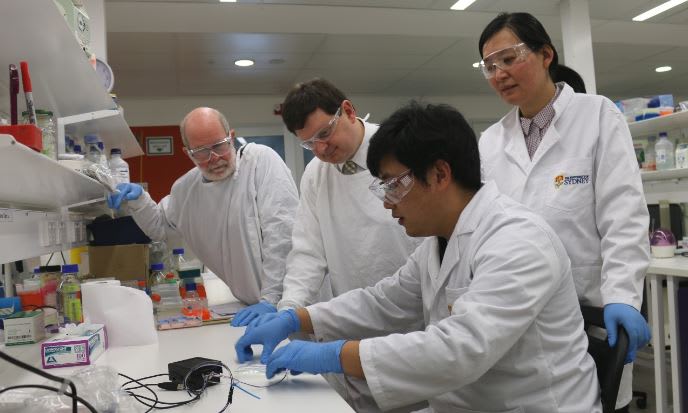Thanks to you we raised almost $9,000!
If you would like to continue to support this research please click here to make your 100% tax deductible gift.
Detecting Diabetes
Did you know that 280 Australians develop diabetes every day? That’s one person every 5 minutes.[1]
1 in 11 adults have diabetes or the equivalent of 415 million people worldwide and it is estimated that this number will keep growing, reaching as many as 642 million by 2040.[2]
Diabetes is one of the fastest growing chronic conditions in Australia and all types of diabetes are complex and require daily care and management.
At the University of Sydney, our researchers, Associate Professor Xiaoke Yi, Postgraduate student Adrian Wu & Professor Stephen Twigg, along with industry and government partners, have developed a device that measures ketone chemicals produced in our liver when other forms of energy called energy substrates are not available, such as glucose. For type 1 diabetes patients, elevated ketone levels can be life-threatening.
Current monitoring methods that diabetics routinely use such as finger pricking to test blood glucose levels are invasive and must be done several times every day. This revolutionary hand-held breath testing device could mean an end to finger prick blood tests for diabetes patients. The technology is needle-free, risk-free and pain-free. It is also cost effective, fast and highly accurate at detecting ketone levels. Two-thirds of diabetic patients live in low to middle-income countries; this device could be life changing if they had access to a low cost monitoring unit.

The device is being developed to allow people living with type 1 diabetes to better manage and detect incidences of ketoacidosis, a life-threatening medical emergency that occurs when the body does not produce enough insulin, causing the liver to produce high levels of ketones that damage the surrounding organs.
The device will also have the potential to monitor and assist several other diseases such as liver disease, epilepsy, and Alzheimer’s Disease.
How can you help?
Every dollar counts.
Help the research continue as we get closer to making this device to the general public. Please show your support by making a gift today. Donations of all sizes mean so much to us and will help to make a difference in the lives of diabetics on a global scale.
If you are not in a position to give, please share our project with your friends and family through social media and your networks.
[1] Diabetes Australia www.diabetesaustralia.com.au
[2] From the 2015 International Diabetes Federation’s Diabetes Atlas
